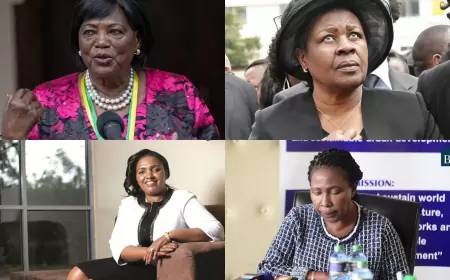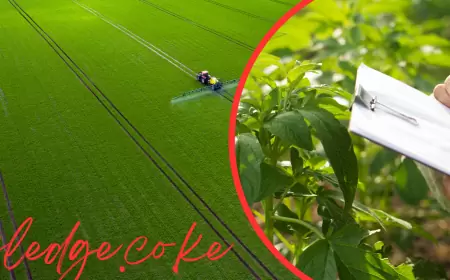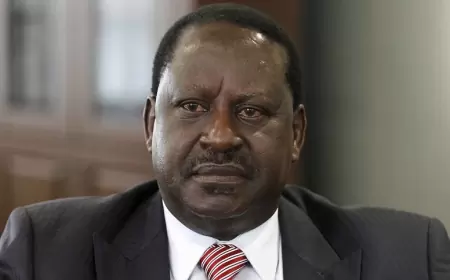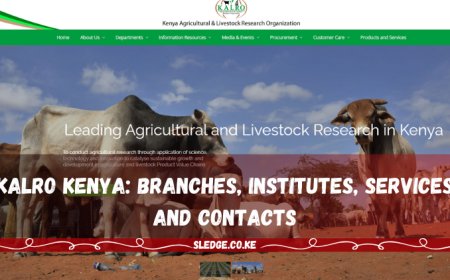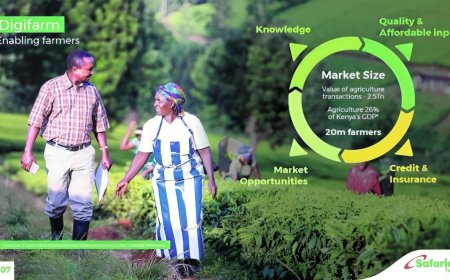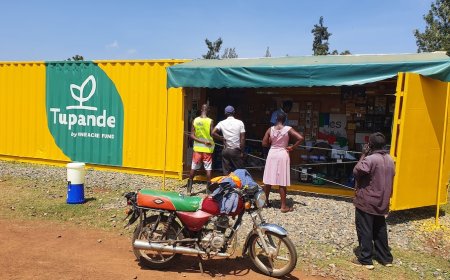Organizational Structure of the Ministry of Education in Kenya 2024
Explore the Ministry of Education in Kenya 2024. Dive into its restructured hierarchy, directories, and innovative curriculum updates.
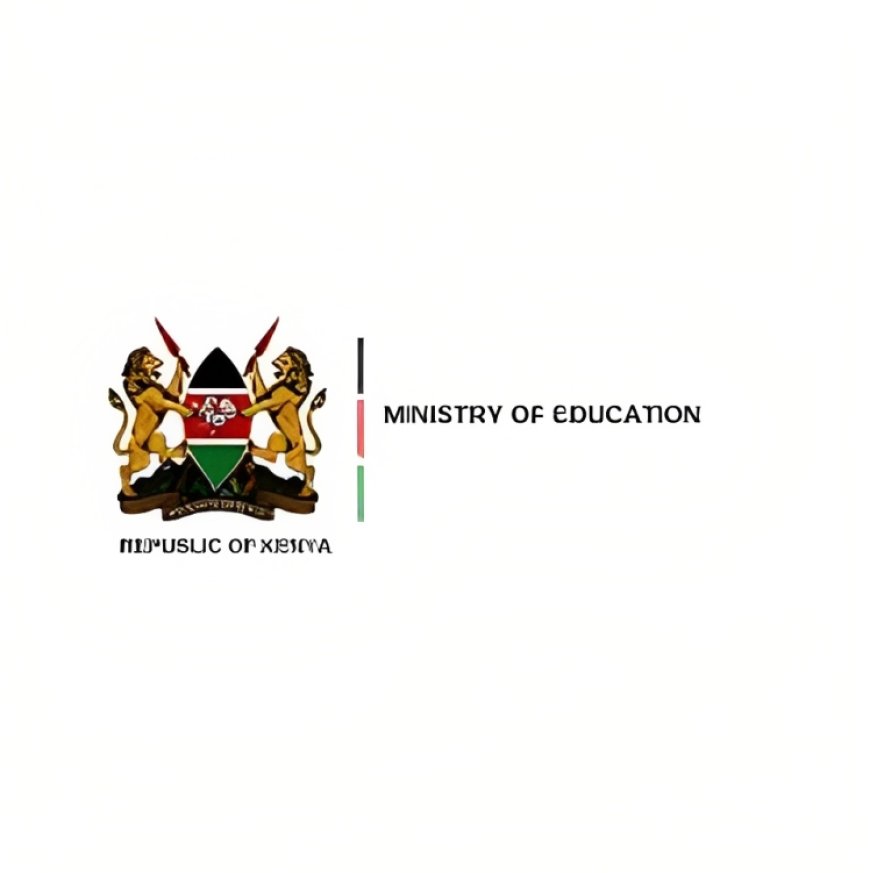
The Ministry of Education, Science, and Technology, a beacon guiding the nation's educational journey, stands in the heart of Kenya's bustling education sector. As we step into 2024, it's crucial to unravel the layers of this vital institution, understanding its structure and profound impact on shaping the future of Kenyan education.
Imagine walking through the corridors of a Kenyan school - you'll witness the echoes of decisions and policies emanating from this Ministry. It's like the central nervous system of Kenya's educational body, coordinating and ensuring that every limb, every organ, every cell - in this case, schools, teachers, and students - functions harmoniously towards a common goal: quality, accessible, and relevant education.
But why does this matter? Picture a world without such an organization; it would be like a ship without a rudder drifting aimlessly in the ocean of global education. The Ministry doesn't just create policies out of thin air; it reflects the aspirations of a nation striving to equip its youth with the tools needed to build a prosperous future. It’s about shaping minds, crafting futures, and empowering dreams.
As 2024 unfurls its chapters, the Ministry is carrying forward its legacy and adapting, evolving, and responding to the changing educational landscape. Think of it as a tree firmly rooted in its core values of education but constantly growing new branches, reaching out to the skies of innovation and global relevance. Like a skilled gardener this year, the Ministry prunes and shapes its strategies to ensure robust growth and fruitfulness.
In this discussion, we're not just looking at a static organizational chart; we're diving into a living, breathing entity that responds, reacts, and reshapes itself. We'll explore the intricacies of its structure - the various branches and leaves that make up this colossal tree. We'll delve into the recent updates for 2024, understanding how these changes are poised to reshape the education landscape in Kenya.
READ ALSO: Top Hospitals In Nanyuki Kenya their locations And Contacts For 2024
Overview of the Ministry’s Structure
In the vast expanse of Kenya's educational terrain, the Ministry of Education, Science, and Technology stands divided yet unified under two colossal pillars: The State Department of Education and the State Department of Science and Technology. These two departments are like the two main arteries pumping life into Kenya's education system, each carrying its unique blend of vitality and purpose.
The State Department of Education:
Picture this department as a gardener, meticulously nurturing the seeds of primary education. It's where the roots of learning are watered, where young minds are cultivated to sprout into well-rounded individuals. This department is the steward of Kenya's future, overseeing everything from pre-primary education to the intricate details of primary and secondary education.
On the other hand, The State Department of Science and Technology is like a visionary architect, constructing the framework for higher learning and innovation. Here, the foundations of science and technology education are laid down, and bright minds are given the tools to build and innovate. This department is not just about education; it's about pushing the frontiers of knowledge and igniting the spark of research and development.
The Ministry is further segmented into eleven directories within these two mighty pillars. Each directory serves a distinct purpose, like cogs in a well-oiled machine. They are not isolated units but interconnected parts of a larger whole, each playing a critical role in Kenya's educational aspirations.
Think of these directories as specialists in a hospital. Each one has its expertise and its area of focus. From shaping the curriculum to ensuring the quality of education, from fostering partnerships to driving technological advancements, these directories work in tandem, ensuring every aspect of Kenya's education system is covered.
This structure is not just a bureaucratic arrangement; it's a thoughtfully designed ecosystem. Each directory, with its specific mandate, ensures that the Ministry's functions are not just fulfilled but excel in delivering quality education. Whether it's formulating policies or implementing training programs, these directories are the Ministry's limbs, reaching out across the nation and ensuring every Kenyan student receives the education they deserve.
Detailed Look at the Directories and Their Functions
The Eleven Pillars of Educational Excellence in Kenya
In the grand architecture of the Ministry of Education, Science, and Technology in Kenya, each of the eleven directories stands as a pillar, upholding a specific aspect of the nation's educational framework. These directories, diverse in their functions, come together to weave the rich tapestry of Kenyan education.
1. Administration and Planning:
Picture this Directorate as the backbone of the Ministry, providing essential support services to its counterparts. It's like the nervous system, ensuring smooth communication and coordination. The units under this Directorate, including Administration, Central Planning, and Project Monitoring, work tirelessly behind the scenes. Their roles encompass a wide range of critical tasks, from gender and guidance counselling to human resource management, ensuring the effective delivery of educational mandates across the board.
2. Directorate of Basic Education:
This Directorate is the guardian of foundational learning. It shapes the policies and designs of pre-primary education, nurturing the roots of Kenya's educational tree. Imagine this Directorate as a nurturing ground where primary education is given the care it needs to thrive. It also extends its reach to special needs education, ensuring inclusivity and equal opportunities for all learners.
3. Directorate of Secondary and Tertiary Education:
Serving as a bridge between basic and higher education, this Directorate coordinates secondary education while harmonizing pre-service training for secondary school teachers. Think of it as a sculptor, shaping the young minds and preparing them for the complexities of tertiary education and beyond.
4. Directorate of Quality Assurance and Standards:
This Directorate is the quality control unit, ensuring educational standards are met and exceeded. Through periodic assessments and collaborations with bodies like KICD and KNEC, it maintains the academic excellence that Kenya strives for.
5. Directorate of Policy, Partnerships, and East Africa Community Affairs:
This Directorate is the Ministry's diplomat, fostering policy-making and enhancing partnerships. It's like a bridge builder, creating connections beyond Kenya's borders and embracing the East African community in its educational endeavours.
6. Directorate of Alternative Provision of Basic Education and Training:
Focused on adult and continuing education, this Directorate provides a second chance to those who missed basic education. It's a beacon of hope, offering skills and knowledge to adults and youths, enabling them to rejoin the path of learning and personal development.
7. Directorate of Technical Education:
As the driver of technical education and training, this Directorate ensures technical education's relevance, access, and quality. It's like an engine room, powering the development of skills and fostering innovation and research in technical institutes.
8. Directorate of Technical Accreditation and Quality Assurance:
This Directorate safeguards the standards of technical training, overseeing the quality of curriculum and technical examinations. Picture it as a watchful guardian, ensuring the technical education meets the highest standards and remains industry-relevant.
9. Directorate of Higher Education:
This Directorate shapes the policies and coordinates the vast expanse of higher education in Kenya. It's like a master planner, ensuring university education is accessible, high-quality, and relevant to national and global needs.
10. Directorate of Research Management and Development:
At the forefront of innovation, this Directorate crafts policies for research, science, technology, and innovation. Imagine it as a think tank guiding the integration of research and development into Kenya's economic fabric.
11. Directorate of Youth Training:
Dedicated to revitalizing youth polytechnics, this Directorate empowers youth with relevant education and training. It catalyzes youth engagement in national development, aligning with constitutional mandates for youth education and employment.
Each of these directorates, with their distinct roles, come together to form a cohesive and comprehensive educational system. They are not just administrative units but the lifeblood of Kenya's educational ecosystem, each contributing uniquely to the nation's pursuit of academic excellence.
Hierarchy and Key Offices in the Ministry
In the intricate web of the Ministry of Education, Science, and Technology in Kenya, understanding the hierarchy is like decoding a complex map. Each office plays a pivotal role in the smooth governance and execution of educational policies and programs.
1. Office of the Cabinet Secretary:
Perched at the pinnacle of this hierarchy is the Office of the Cabinet Secretary. This office is akin to the captain of a ship, steering the entire Ministry towards its strategic goals. Providing policy and strategy leadership, the Cabinet Secretary's role is fundamental in shaping Kenya's educational landscape. With a team comprising a personal assistant, technical assistants for education and science and technology, and administrative support staff, this office is the decision-making and policy-formulating nucleus of the Ministry.
2. Office of the Principal Secretary:
Next in line are the twin offices of the Principal Secretary, one each for Education and Science and Technology. These offices are like the Ministry's chief operating officers, responsible for the day-to-day administrative and financial operations. The Principal Secretary is the authorized accounting officer, ensuring that the Ministry’s financial resources are managed efficiently and effectively. This role is crucial, as it bridges the gap between policy formulation at the top and operational execution at the grassroots level.
3. Directorate Offices Under the Principal Secretary:
- Office of the Director General Education: Established through the Basic Education Act of 2013, this office plays a key role in advising the Principal Secretary on technical aspects of state education. It oversees coordinating projects, partnerships, and international commitments, including implementing ICT for Education projects and the Field Administration Services Unit. Think of this office as the Ministry's operational command centre, ensuring that educational projects and programs are executed smoothly and efficiently.
- Directorate of Primary Education: Headed by a Secretary, this Directorate manages primary and special needs education overall. It's like the Ministry's guardian of primary education, ensuring that the foundation of Kenya’s educational structure is strong and resilient. This Directorate organizes itself into departments focused on research, policy, strategy, and primary education development, thus ensuring a holistic approach to primary education.
- Directorate of Secondary and Tertiary Education: Managed by a Secretary of Secondary Education, this Directorate oversees secondary and tertiary education. It’s like a bridge-builder, linking secondary education to the more advanced tertiary level. This Directorate ensures a smooth transition from secondary to tertiary education, preparing students for higher challenges and opportunities.
- Other Directorates: Each Directorate under the Principal Secretary, focusing on alternative basic education, university education, or school audit, plays a unique role. They collectively ensure that every aspect of education, from policy formulation to execution, is catered to, making the Ministry a comprehensive body overseeing the entire educational spectrum.
This hierarchical structure is not just an administrative necessity; it's a well-orchestrated symphony where each office and Directorate plays its part harmoniously. The hierarchy ensures that while the vision and strategy are set at the top, its execution is effectively carried out at various levels, reaching every corner of Kenya's education system.
2024 Updates and Changes in the Ministry
As we venture into 2024, Kenya's Ministry of Education, Science, and Technology ushers in a new era of educational reforms, embodying the spirit of evolution and progress. These changes are not just minor adjustments but significant leaps towards enhancing the quality and efficiency of education in Kenya.
- Revamping the Competency-Based Curriculum (CBC): 2024 marks a significant milestone with major amendments to the CBC. Envisioning a sculptor reshaping a masterpiece, the Ministry, guided by the Presidential Working Party on Education Reform (PWPER) recommendations, is refining the CBC to suit Kenya's educational needs better. These reforms focus on streamlining learning areas and curriculum designs, addressing issues like content overload and overlaps in basic education. The objective is clear – to make education more coherent, focused, and impactful for every Kenyan learner.
- Rationalization of Learning Areas: The Ministry has boldly simplified the learning areas across various educational levels. For instance, the learning areas in the lower primary have been reduced from nine to seven, with a corresponding decrease in weekly lessons. This change is akin to pruning a tree; by cutting back on the number of subjects, the Ministry aims to enhance the depth and quality of education, allowing students to focus more intensively on each subject.
- Integration and Merging of Subjects: The Ministry's approach to curriculum reform also includes integrating and merging various subjects. For example, hygiene and nutrition activities are now part of environmental activities, while creative arts encompass art, craft, music, and physical education. This holistic approach creates a more interconnected and engaging student learning experience, fostering a well-rounded educational journey.
- Changes in Upper Primary and Junior School: The reforms also extend to upper primary and junior school levels, with a reduction in the number of learning areas and weekly lessons. The Ministry has transformed foreign and indigenous languages into co-curricular activities, a strategic move to enhance linguistic skills outside the conventional classroom setting. This adjustment reflects the Ministry's commitment to providing a balanced education, where academic learning is complemented by extracurricular engagement.
- Enhancing Education Quality and Relevance: At the heart of these changes lies the Ministry's unwavering commitment to improving the quality and relevance of education. The revised curriculum designs, available from January 2024 on the KICD website, are tailored to ensure that learners acquire not just knowledge but relevant competencies and skills. This shift is about changing what is taught and how it is taught, focusing on creating a more dynamic, skill-oriented, and student-centered learning environment.
These updates signal a transformative phase in Kenya’s education system, where the Ministry is responding to contemporary challenges and proactively shaping a future-ready educational framework. These changes reflect a deep understanding of the evolving educational needs of the nation and demonstrate a commitment to ensuring that Kenya's education system remains at the forefront of excellence and innovation.
READ ALSO: KNEC Portal: Registration, Document Access, and CBA Insights 2024
Frequently Asked Questions
What are the primary objectives of the Ministry of Education in Kenya?
- The Ministry's core objective is to ensure Kenyans have access to quality and affordable education at all levels. This includes overseeing the development and implementation of educational policies curriculum development, and ensuring the integration of science, technology, and innovation into the national education system.
How has the Ministry of Education evolved its curriculum for 2024?
- In 2024, significant changes were introduced to the Competency-Based Curriculum (CBC). These include rationalizing learning areas to reduce content overload and integrating subjects for a more holistic educational approach. The aim is to enhance the quality and relevance of education, ensuring students acquire essential competencies and skills.
What is the structure of the Ministry, and how does it function?
- The Ministry is divided into two main divisions: The State Department of Education and the State Department of Science and Technology, which are subdivided into eleven directories. Each directory has a specific mandate, ranging from basic to higher education, technical training, and research development. This structure ensures a comprehensive approach to managing and improving Kenya's education system.
Conclusion
As we reflect on the journey through the Ministry of Education, Science, and Technology in Kenya, it's evident that the institution is not just a bureaucratic entity but a dynamic and evolving body committed to improving education in Kenya. The Ministry's curriculum and operational structure restructuring signifies a responsive and forward-thinking approach.
In 2024, these changes mark a pivotal moment in Kenya's educational history. The Ministry's dedication to enhancing the quality, relevance, and accessibility of education paves the way for a future where every Kenyan learner is equipped with the knowledge, skills, and competencies needed to thrive in a rapidly changing world.
The Ministry's journey is a testament to Kenya's commitment to educational excellence and its unwavering focus on nurturing the potential of its youth. As we look towards the future, the Ministry of Education in Kenya stands as a beacon of hope, innovation, and progress in education, not just for Kenya but as an exemplar for educational systems worldwide.








































